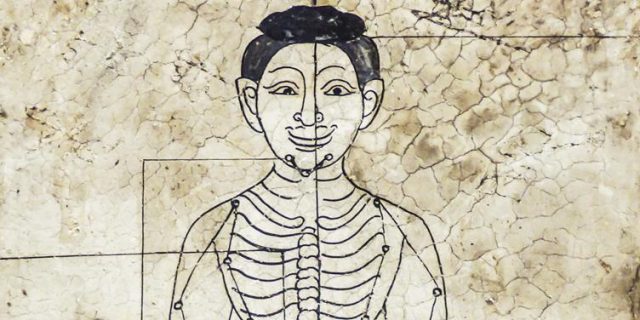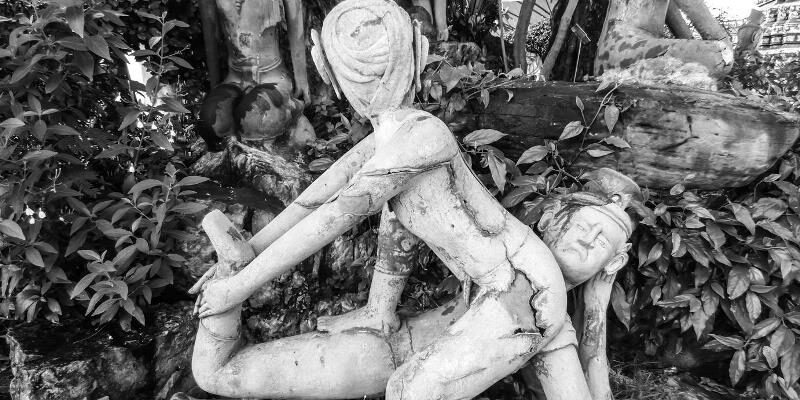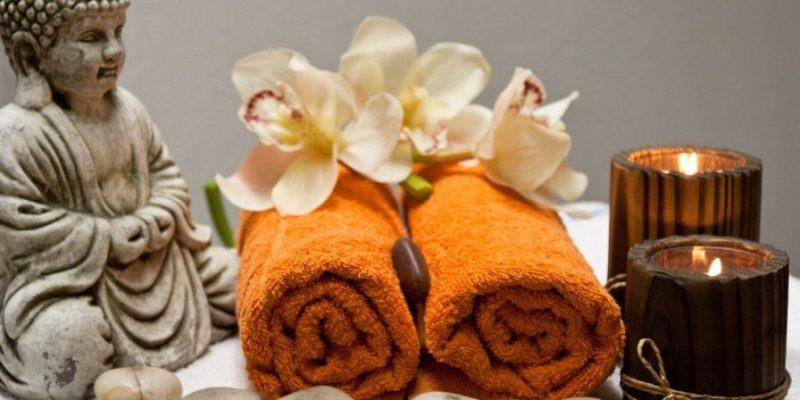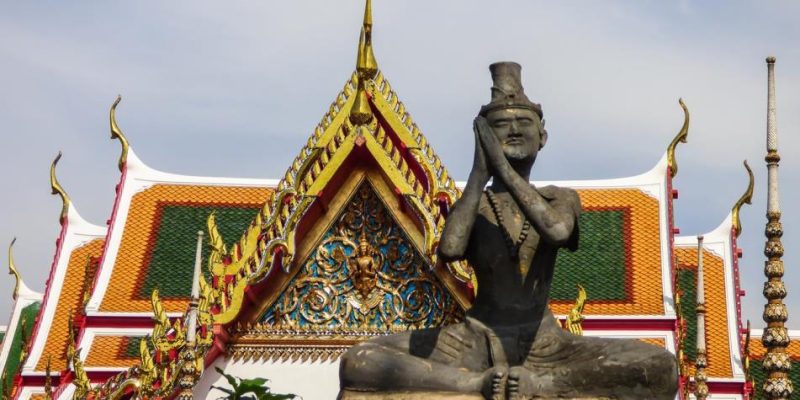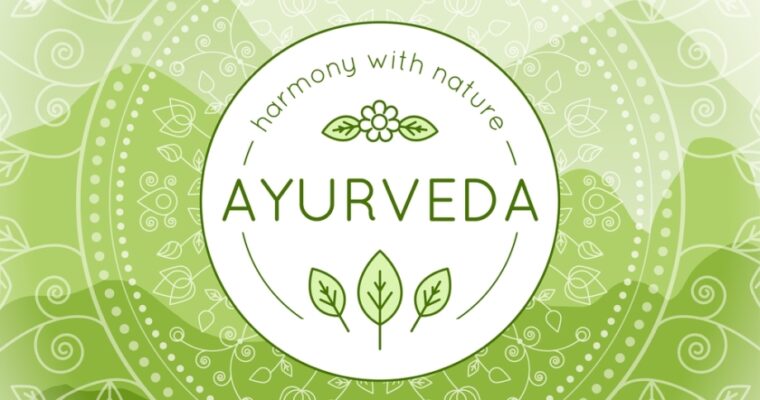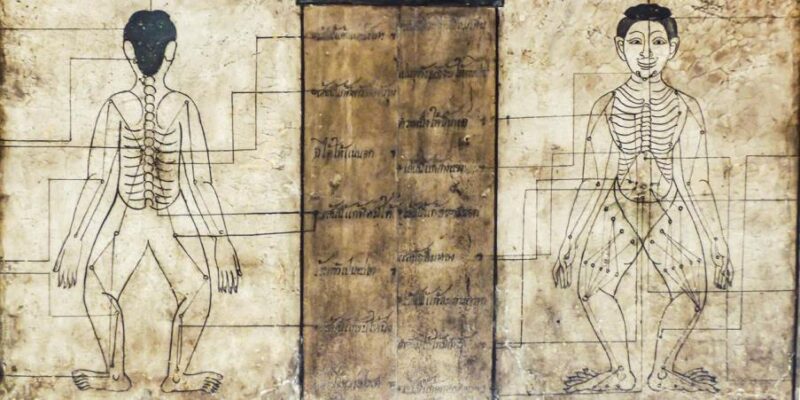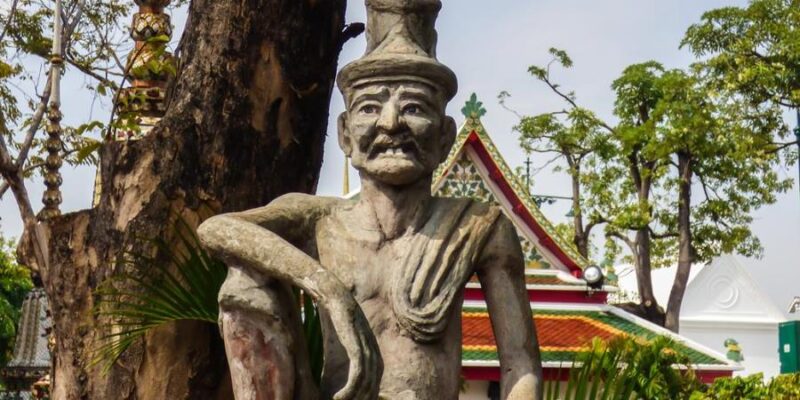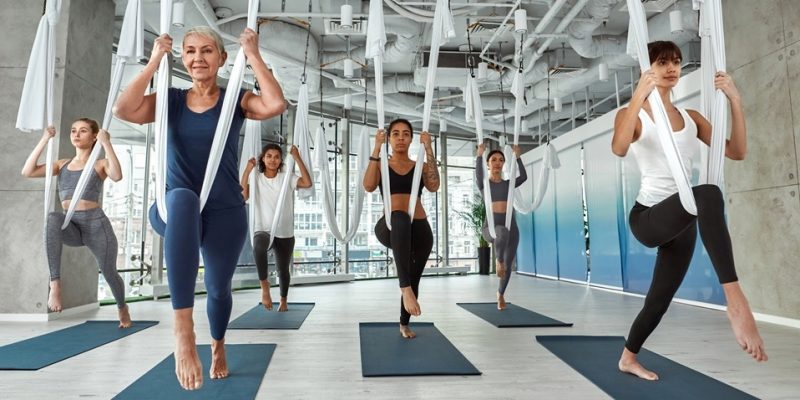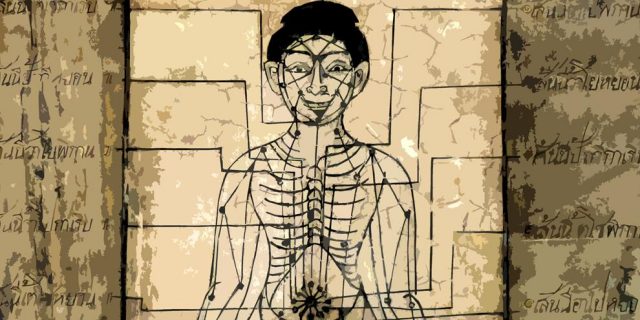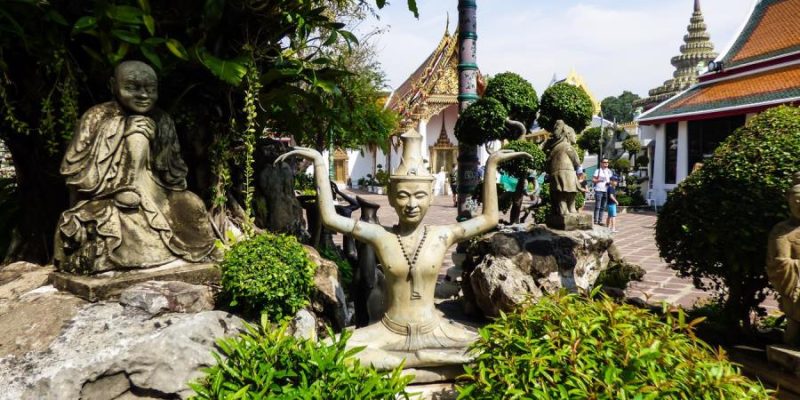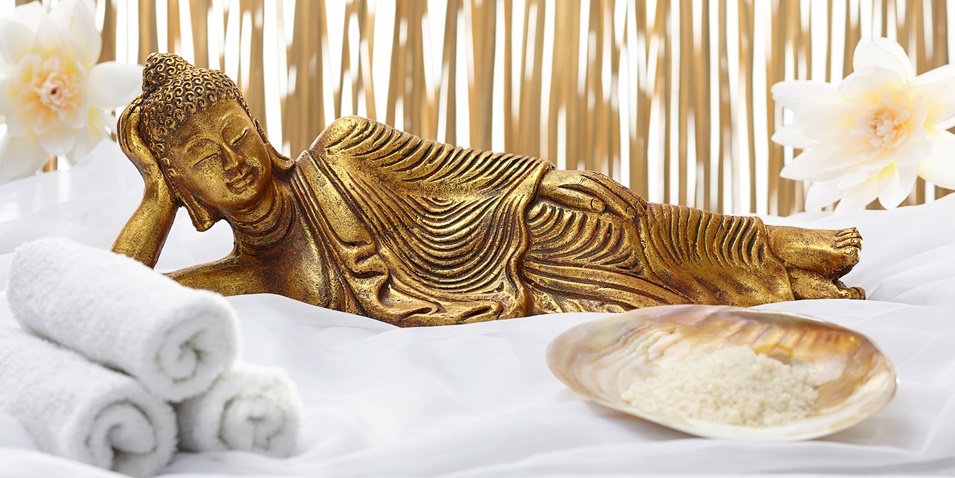
When you hear or read about the origins and history of traditional Thai Massage you will often be told that it was “invented” about 2,500 years ago. Sometimes, it’s also added that the actual “inventor” was Dr. Jivaka Komarabhacca (Jivaka Kumar Bhaccha), a physician and personal friend of Siddhartha Gautama Buddha (the founder of Buddhism), who both lived in India.
The idea of Thai Massage being 2,500 years old relates to the time the Buddha lived (and thus Dr. Jivaka), which is thought to be somewhere between 623 BCE and 543 BCE. As it’s often claimed that Jivaka created Thai Massage, the only logical conclusion would be that Thai Massage was invented around 2,500 years ago. Nevertheless, the latter is very unlikely, and we will discuss the reasons to this further below.

A first remark in this context is that if there existed something like Thai Massage in India at the time, it surely wouldn’t have been called “Thai Massage.” That makes no sense.
Furthermore, even today there’s no traditional massage in India known that resembles Thai Massage, apart from some very recent creations in the 20th century, such as, for instance, Ayurvedic Yoga Massage.
What needs to be understood here is that — in Thailand — Jivaka Kumar Bhaccha is considered the patron saint of Thai Traditional Medicine, which is an acknowledgement and token of respect for its (partly) Ayurvedic and Buddhist roots.
Thai Traditional Medicine comprises of herbal medicine, midwifery, Buddhism, other local spiritual practices, and Thai Massage. As such, homage is given to Dr. Jivaka by Thai Healing Arts and Thai Massage practitioners and teachers before a session or class, or sometimes on other (special) moments.
Moreover, there’s no evidence at all that Jivaka actually gave massages. As far as the earliest Buddhist scriptures i.e. texts go, it’s only recorded that Jivaka was a physician, proficient in Ayurvedic and herbal medicine, in internal surgery, and maybe also in a form of acupuncture.
At best we could say that — perhaps — he practiced a form of Ayurvedic Abhyanga Oil Massage, which is quite different compared to a clothed traditional Thai Massage given without oils.
The actual history and evolution of massage in Thailand is largely unknown, but most likely developed over millennia as a combination and integration of Egyptian, Chinese, Indian, and local indigenous massage practices. However, one of the oldest accounts of Thai Massage comes from a French diplomat to the Thai Royal Court in Ayutthaya, Simon de la Loubère.
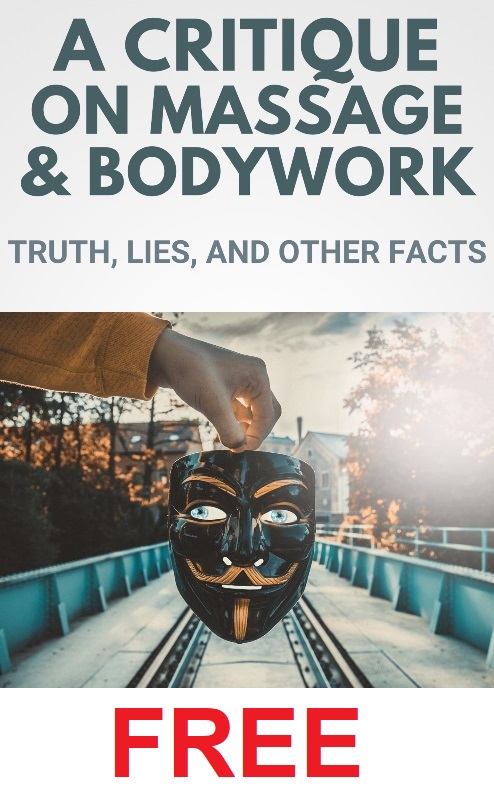
In 1690 CE, he gave evidence of the existence of Thai Massage by writing down: “When any person is sick at Siam he begins with causing his whole body to be moulded by one who is skillful herein, who gets upon the body of the sick person and tramples him under his feet.”
All by all, stating that Thai Massage is 2,500 years old is a misunderstanding, a misconception, or simply “parroting” at best, and a deliberate lie and misleading at worst. In fact, human beings are paradoxical creatures: if something is new, it’s good (such as with technological developments), but then again, it’s also good when it’s old, such as is the case with traditional massages, for instance.
Thus, the earlier in historical time we can place the existence and practice of Thai Massage, the better — well, commercially better.
As a result, advertising tactics and commercial motives sometimes give birth to a deliberate lie about the age of traditional Thai Massage. To be honest, I find this rather unnecessary; a healing modality already proven to be practiced in Thailand in the 17th century CE is to me respectable and traditional enough.
Nonetheless, we should always keep in mind that Thai Massage is continually developing into new forms, and even today it’s in many cases already substantially differently practiced if we would compare the techniques to what was common in the 1950s.







